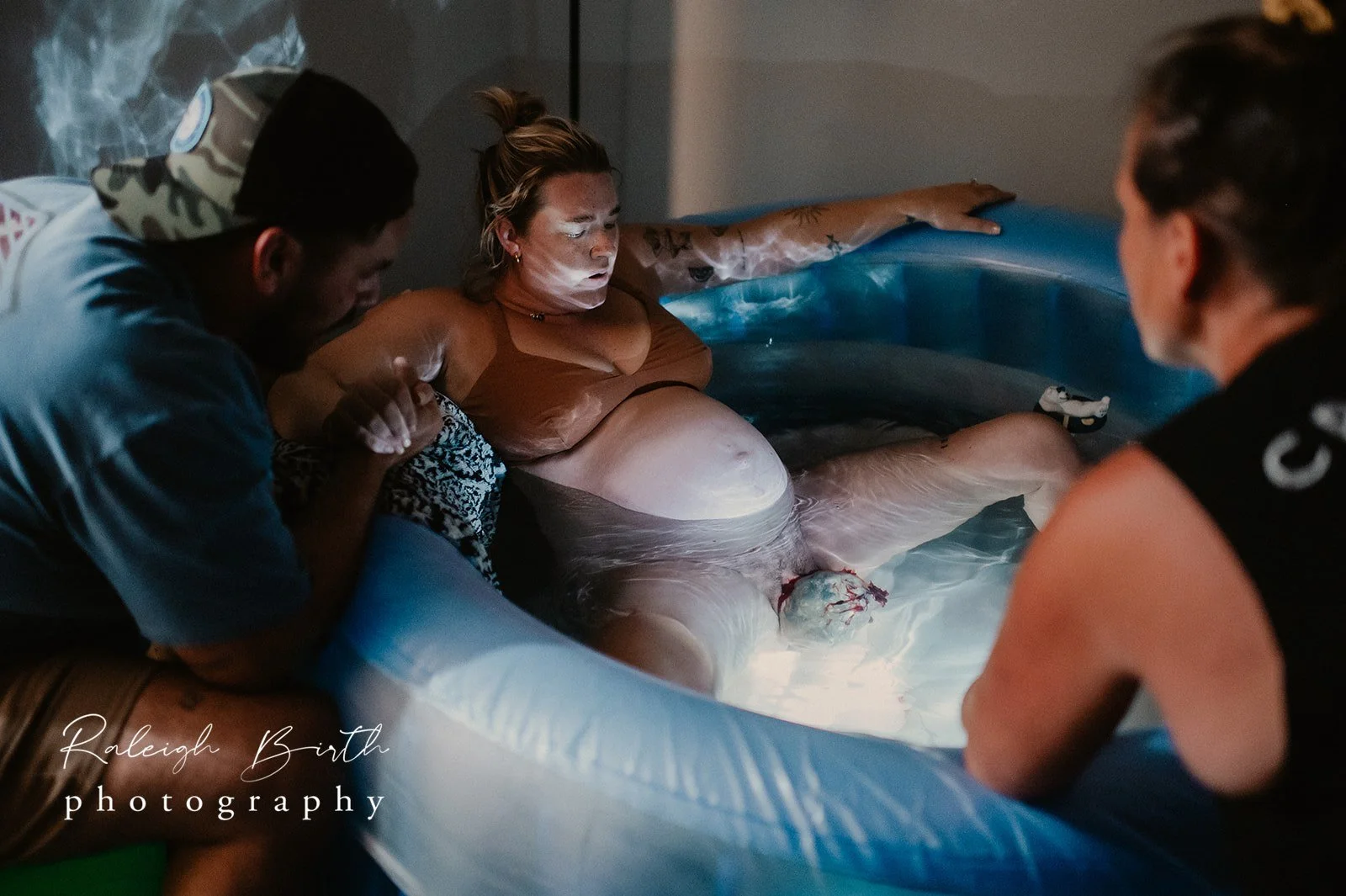Labor & Birth Positions
Embracing Movement for a Positive Birth Experience
Hands and Knees
Labor is a dynamic and transformative experience, with each phase building and bringing you closer to baby in your arms. Many of us have a picture from mainstream media that birth is all done laying on our backs and that just isn’t the case. Actually one of the most impactful ways to support the birthing process is through movement and changing positions. Movement can help your baby get into the best position for birth, potentially reducing labor time and easing discomfort. Listening to your body and instinctively shifting positions can enhance your labor experience, making it a more natural and empowering journey for you too.
I’ll say that with each of my births, I became more attuned to my body and more comfortable with switching positions. For my first I felt a little awkward but eventually learned to trust my body and that meant movement. But with my third birth at home, I spent much of my labor on my hands and knees swaying because it progressed really quickly. I was in a primal place and it felt so empowering trusting my body and allowing it to guide me through each wave.
I wanted to share this blog with you because I really think it can be helpful to know your options before labor even starts. Learning these positions and even practicing them with your partner can help you naturally flow into them when the time comes and it can also help your partner get involved and remind you throughout of different positions to try.
Sitting on the birth ball
Standing & Swaying
Early Labor Positions
Walking - Staying active in early labor is a great way to get the baby moving and allow gravity to work in your favor. Just don’t tire yourself out because you may be in for a long day.
Dancing or swaying - Movement is great for early labor, so turn up the music and let your body connect with the rhythm.
Sitting on the birth ball - Bouncing on the birth ball can be a great way to relax the pelvis and allow gravity to support the baby descending into the pelvis.
One leg Up lunge
Posterior Baby and Back Pain
One leg Up lunge - Opens the pelvis and offers more space for the baby to move, often relieving pressure in your back.
Side-lying release - With the help of your partner, lie on your side and lean toward the edge of the bed. This is very helpful for turning the baby and helping labor progress if things have stalled. Learn exactly how to do this here.
Leaning over the birth ball - This neutral gravity position can help the baby move and reduce labor intensity.
Side-lying release
Active Labor Positions
Hands and knees - This is a great primal position that helps open the pelvis as the baby starts to descend.
Sit on the toilet - This can be really great for allowing rest while also opening and relaxing your muscles. Sit here through a few contractions if things are slowing, and you may have a baby in your arms fast.
Lean on the edge of the tub - For those using a water tub, leaning over the edge can give you that neutral gravity in a supported way.
Side-lying - If you are exhausted but still want your position to be helpful, place a peanut ball or pillows between your legs and lay with one leg leaned forward while you rest on the bed.
Supported squat - You can use your partner or a birth stool for this. Similar to the toilet, this gives your pelvis room and can help with progressing the baby down into the pushing phase.
Semi-sitting
Supported Side-lying
Positions You Can Do With an Epidural
Side-lying - This is a great position after an epidural because it allows your body to stay open for the baby to descend. Use a peanut ball between your legs for the best position.
Semi-sitting - Sitting in a semi-reclined position with support from pillows or the hospital bed can help gravity assist in the baby’s descent while keeping you comfortable. Some beds even allow you to get into a throne position, which can do the same.
Hands and knees with support - With assistance, you can still use a hands-and-knees position. This can be particularly helpful in relieving back pain and facilitating the baby’s rotation.
Squatting with Hospital bed bar
Pushing Positions
First of all, you should push however makes you most comfortable, your body will tell you if you listen so 100% trust it!
Hands and knees - This is a great option because you are grounded, and your pelvis is open.
Standing or squatting - Allows gravity to do a lot of the work along with you.
Laying on your back or side - Some people actually enjoy pushing while lying down, so trust your body. However, lying flat on your back typically closes the pelvis, so be sure to switch positions if pushing feels long.
In water - Water helps with pain relief, especially in the pushing phase, and can be an amazing way to support your body through those final pushes.
Using the hospital bar and squatting position - Some hospitals have large bars that can be added to the bed so you can have a supported semi-squat position.
pushing in water
pushing on toilet
Staying active throughout pregnancy can make the transition into labor more seamless, allowing labor to feel like a natural progression rather than a sudden, overwhelming event. Practicing these positions with your partner can also be incredibly beneficial. When you both know what to expect and how to assist each other, these positions will feel more intuitive and relaxing once labor begins. The goal is to relax into each position, trusting your body’s wisdom and your partner’s support to guide you through the process. Embrace movement, stay active, and let the rhythm of labor lead you into a beautiful birth experience.
Some resources I love and would encourage you to look into for more positions and direction are,











